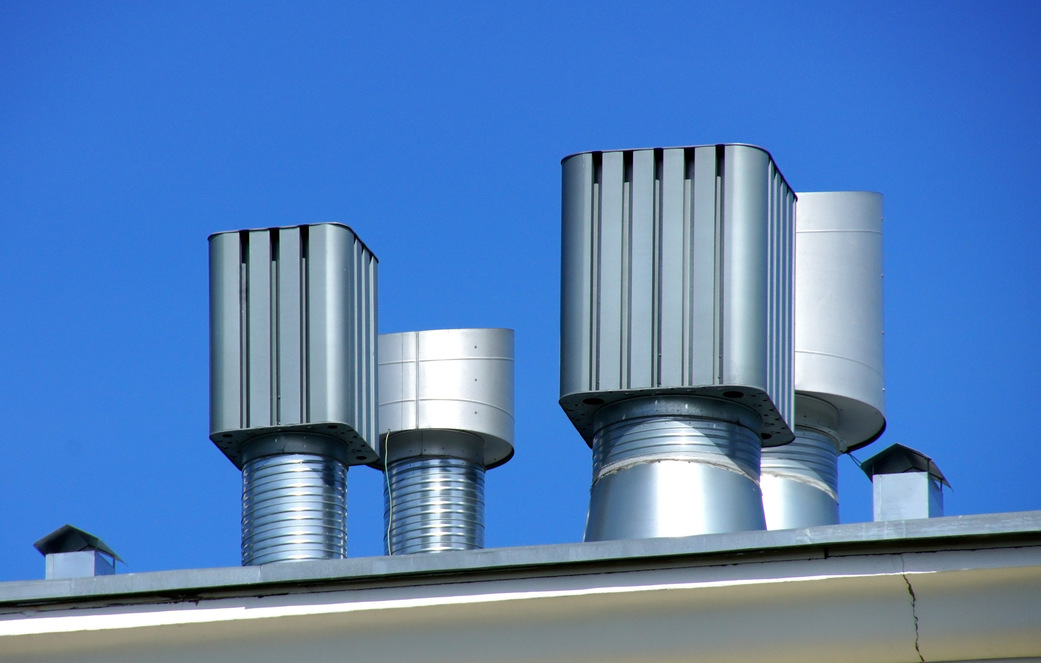How Correct Ventilation Supports Your Plumbing System
How Correct Ventilation Supports Your Plumbing System
Blog Article
Everybody seems to have their private piece of advice on the subject of What Is a Plumbing Vent and Why Is It Important.

Proper ventilation in pipes systems is commonly neglected, yet it is important for preserving the functionality and safety of your home's plumbing. Ventilation aids control atmospheric pressure, avoid the buildup of unsafe gases, and guarantee the reliable removal of waste. In this overview, we will check out the significance of correct plumbing air flow, exactly how it works, and the benefits it gives your plumbing system.
How Ventilation Functions in Pipes Systems
Atmospheric Pressure Guideline
Proper ventilation maintains balanced air pressure within the plumbing system. When water streams via pipelines, it displaces air. Without ample ventilation, this displacement can create adverse stress, resulting in reduce drains or siphoning of water from catches, which can cause unpleasant smells to seep into the home.
Protecting Against Drain Gas Buildup
Among the most crucial features of pipes vents is to prevent drain gases, such as methane and hydrogen sulfide, from gathering within the home. These gases can present significant wellness threats and are very combustible. Vent pipes enable these gases to run away safely outdoors.
Helping in Waste Removal
Air flow helps in the efficient elimination of wastewater by avoiding airlocks in the drainage system. When air can stream easily through the vents, it allows water and waste to move efficiently through the pipes, lowering the risk of blockages and backups.
Benefits of Appropriate Ventilation
Improved System Efficiency
Correctly aerated plumbing systems run more successfully, with less blockages, faster draining pipes, and less stress on the pipes. This performance prolongs the life-span of the pipes system.
Improved Air Quality
By protecting against drain gases from entering your home, appropriate ventilation adds to far better indoor air top quality, making your living setting healthier and much more comfy.
Preventing Water Damage
Ample ventilation assists prevent water from being siphoned out of catches, which can lead to sewage system gases going into the home and causing water damages over time.
Steps to Make Certain Correct Ventilation
Consulting Plumbing Codes
Always consult local pipes codes when creating or changing your pipes system. These codes offer the essential standards for proper venting and ensure your system meets security criteria.
Normal Inspection and Maintenance
Normal assessments can help determine potential air flow concerns before they end up being significant problems. Upkeep tasks, such as cleaning air vent pipes and checking for blockages, are necessary for keeping the system in good working order.
Specialist Installment
For brand-new installments or significant alterations, it's a good idea to hire a professional plumbing. They have the knowledge to make sure the ventilation system is properly developed and mounted according to code.
Understanding Ventilation in Pipes
Air flow in plumbing refers to the network of pipelines that permit air to flow via the drain system. These vents offer several objectives, including managing air pressure within the pipelines, preventing sewer gases from entering the home, and aiding in the smooth circulation of wastewater.
Types of Plumbing Vents
Main Heap Vent
The major stack air vent, additionally called the air vent stack, is the primary air vent in a plumbing system. It expands from the main drainpipe line up via the roof, enabling gases to leave and fresh air to enter the system.
Branch Vent
Branch vents attach to the primary stack air vent and offer private components, such as sinks, bathrooms, and showers. These vents guarantee that each component has appropriate air flow to function effectively.
Air Admittance Shutoff (AAV).
An Air Admission Shutoff (AAV) is a one-way shutoff that enables air to go into the plumbing system without the need for a conventional air vent pipeline expanding with the roof. AAVs are commonly used in renovations or areas where setting up a typical air vent is unwise.
Indications of Poor Ventilation in Plumbing.
Slow Draining Fixtures.
If your sinks, tubs, or bathrooms are draining pipes gradually, maybe an indication of poor ventilation. Poor air flow can create a vacuum result, making it challenging for water to drain effectively.
Gurgling Seems.
Gurgling audios originating from drains are typically a result of air being sucked via water catches because of negative stress in the pipelines. This is a clear indicator of not enough ventilation.
Undesirable Smells.
Drain odors inside your home are a warning that your pipes system is not appropriately aerated. This could suggest that sewer gases are not being appropriately vented outside, causing potentially harmful conditions.
Typical Ventilation Mistakes.
Inadequate Vent Sizing.
Utilizing undersized vent pipes can lead to inadequate air flow and pressure discrepancies in the system. It's vital to utilize vents that fulfill the certain demands of your pipes system.
Improper Vent Placement.
Putting vents as well much from the fixtures they serve can reduce their performance. Proper placement guarantees that air can move easily and successfully through the system.
Ignoring Code Requirements.
Building regulations supply specific guidelines for pipes air flow. Disregarding these codes can result in a system that falls short to function properly and may bring about expensive repair services or health hazards.
Verdict.
Correct ventilation is a critical part of any plumbing system, making certain that it operates efficiently and securely. By recognizing the value of ventilation, identifying the indicators of poor ventilation, and taking actions to preserve your system, you can protect against costly concerns and safeguard your home's air top quality.
4 Things You Should Know About Your Plumbing Vents
What Plumbing Vents Are
Also called a vent stack, a plumbing vent is a vertical pipe attached to your drain line that runs through your roof. The plumbing vent pipe, or plumbing air vent, removes gas and odors from your plumbing system and allows fresh air to enter the pipes, helping the water to flow out of the drain pipes.
What Plumbing Vents Do
Plumbing vents have two basic functions. One of which is to allow unpleasant smelling wastewater and sewer gasses to escape your plumbing system instead of entering your home. Plumbing vent pipes are typically located on roofs, away from windows, to ensure the fumes exit the home completely.
The other function of the plumbing vent is to move fresh air into your plumbing system. This helps move water through every plumbing fixture in your house, like toilets and sink drains. Think of the way in which you need to let a little air into the bottle as you pour soda in order to make the drink flow smoothly.
Different Types of Plumbing Vents
True vent: This is the most common vent option. In simplest terms, a true vent is a vertical pipe attached to your drain line that exits through the roof. They often function as the main vent that other fixtures can connect to. Re-vent pipe or auxiliary vent: Attached to the drain line near specific plumbing fixtures, re-vent pipes run up and over to connect to the main vent. Common vent: Two plumbing fixtures installed on opposite sides of a wall are typically tied into the vent stack using something known as a sanitary cross. Wet vent: This venting option operates as a drain pipe and a vent at the same time. Wet vent drainage systems drain water from one fixture while venting the air from another. Although they’ve been used for over 100 years, wet vent systems have only recently been added to the plumbing code in many areas. If you’re planning on installing one in a bathroom remodel, make sure you check your local code prior to construction. Loop vent: For free-standing fixtures like kitchen island sinks, loop vents are ideal. These vent pipes run under the floor, rise from the P-trap, and create a loop inside the cabinet sink. Air admittance valve: An AAV is a one-way mechanical valve typically installed at the site of the plumbing fixture. AAVs allow venting to occur without having to tie into a larger venting system. They’re ideal for venting fixtures where you aren’t able to easily connect to an existing vent system. Common Plumbing Vent Issues
Although vent pipes typically don’t have water flowing through them, they’re still subject to many typical plumbing issues. For example, clogs are one of the most common problems associated with sewer vent pipes. If your vent pipe gets clogged, all of your plumbing fixtures tied into the vent stack will be affected.
A sink with a slow drain that bubbles and gurgles or a strong sewage smell around your toilet are both indicators that your toilet vent pipe is clogged. Because most vent pipes exit through the roof, old leaves, twigs or even a bird’s nest could be clogging the pipe.
Clogs in your vent pipe system cause a buildup of negative pressure, meaning that water won’t be able to flow out of your home very well. It’s similar to putting your finger over the opening of a straw to trap water inside. When you remove your finger, the water is able to flow out of the straw.
If you suspect you have any blockage in your vent, make sure you have a professional come examine the situation. Left unchecked, a blocked air vent can lead to other costly repairs, like leaks and sediment buildup.
Under Pressure
Pipe vents are essential aspects of a home’s plumbing system. Owning a home means learning about all sorts of things you never put much thought into before. But by understanding as much as you can about the important systems of your home, you can keep those budgets intact and those anxiety levels low.
https://www.homeserve.com/en-us/blog/home-improvement/plumbing-vents/

Do you enjoy more info about What Is a Plumbing Vent and Why Is It Important? Try to leave a remark further down. We would be pleased to listen to your thoughts about this posting. We are looking forward that you come back again later on. Do you know another individual who is inquisitive about the topic? Feel free to promote it. Thanks a bunch for being here. Return soon.
Schedule Service Pickup Report this page